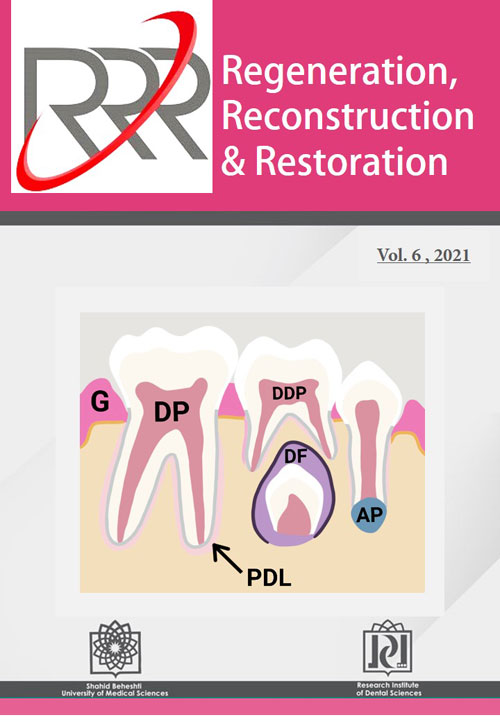فهرست مطالب
Journal of Regeneration, Reconstruction and Restoration
Volume:2 Issue: 3, Summer 2017
- تاریخ انتشار: 1397/11/17
- تعداد عناوین: 2
-
-
Page 1Introduction
Oral squamous cell carcinoma (OSCC) is the most abundant dysplasia in the oral cavity that aberrant expression of microRNA plays an important role in cancer progression. It is well known that microRNA-21 expression is oncogenes or tumor suppressor factor in malignancy formation of several cancers. In this study used OSCC tissues to investigate the expression of mir-21 in malignancy causes.
Material and MethodsOSCC tissues and normal samples were collected from Amir Alam and Taleghani Hospitals as fresh and frozen samples. The Expression level of miR-21 in OSCC and normal tissues were measured by qRT-PCR. To find the targets related mir-21 used databases including TargetScan, GenTrail2, GO and STITCH online websites.
ResultsMiR-21 found significantly up-regulated in OSCC tissues compared to normal tissues (Fold-change=5.54). Targets of miR-21 derived from the TargetScan and GeneTrail2 analysis determined the most significant biological processes be associated with the epithelialization, differentiation, and morphogenesis. So overexpression of miR-21 could reverse this process and promote the cells to stemness and metastatic state. EGFR and PDCD4, two targets of miR-21, previously have been demonstrated that are important in OSCC invasion, metastasis, and differentiation. In addition study on targets genes to find anticancer drugs enriched CI-1033 as a tyrosine-kinase inhibitor that previously reported for the treatment of cancer.
ConclusionOur findings indicate miR-21 act as oncomiR in OSCC and may be considered as a biomarker for the development of OSCC treatment.
Keywords: Oral squamous cell carcinoma (OSCC), miR-21, qRT-PCR, Bioinformatics -
Page 2Introduction
Vascular anomalies are extremely challenging lesions. Management of these lesions vary according to the nature of the lesion.
Case ReportWe represent an aggressive osteoblastoma that clinically bear a resemblance to vascular lesion.
ResultsResection of the lesion and immediate reimplantation of the mandibular body was attained for the patient. 7-year follow up revealed complete healing of the lesion.
ConclusionResection and Immediate Replantation of the Segment may be an appropriate option for the involved patients for an aggressive osteblastoma with vascular component.
Keywords: Hemangioma-like Osteoblastoma, Immediate Replantation, Resection


